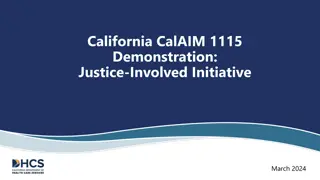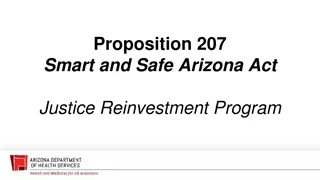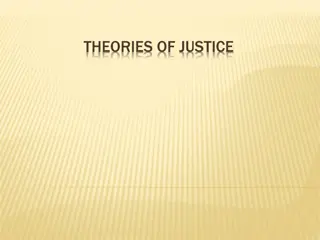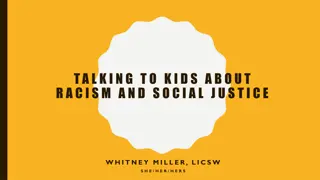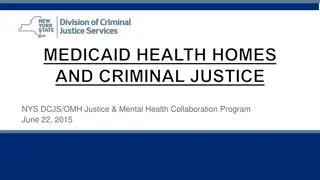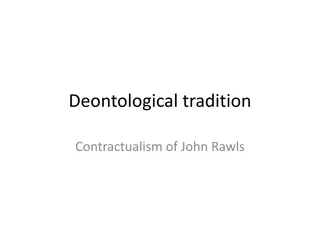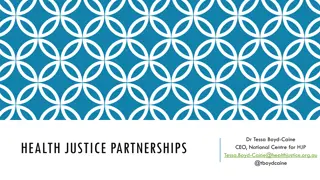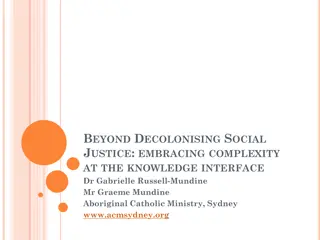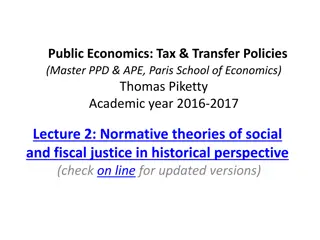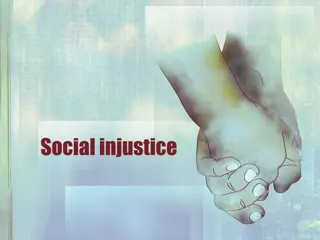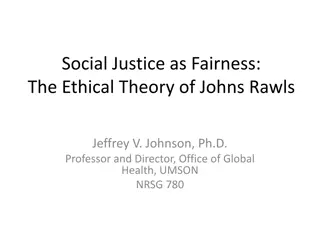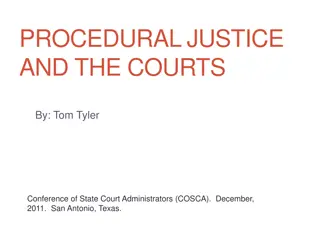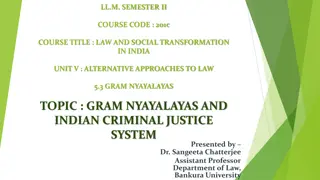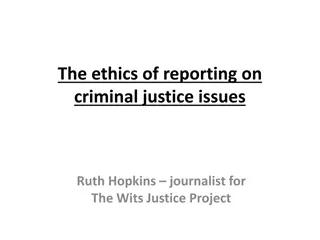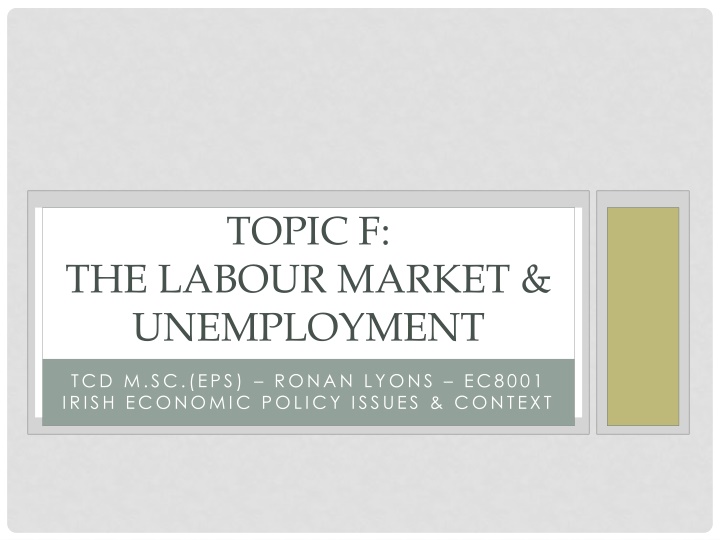
Labor Market, Inequality, and Social Justice in Irish Economic Policy Context
Explore the complexities of the labor market and unemployment, social justice, and inequality within the Irish economic policy framework. Delve into the historical perspectives, policy options, and public spending dynamics driving economic decisions in Ireland.
Download Presentation

Please find below an Image/Link to download the presentation.
The content on the website is provided AS IS for your information and personal use only. It may not be sold, licensed, or shared on other websites without obtaining consent from the author. If you encounter any issues during the download, it is possible that the publisher has removed the file from their server.
You are allowed to download the files provided on this website for personal or commercial use, subject to the condition that they are used lawfully. All files are the property of their respective owners.
The content on the website is provided AS IS for your information and personal use only. It may not be sold, licensed, or shared on other websites without obtaining consent from the author.
E N D
Presentation Transcript
TOPIC F: THE LABOUR MARKET & UNEMPLOYMENT TCD M.SC.(EPS) RONAN LYONS EC8001 IRISH ECONOMIC POLICY ISSUES & CONTEXT
MODULE OUTLINE Topic Title A B C D E F G H I J EoI Ch 1+ 1+ 2, 7 3, 4 6 8 5 9, 11 12, 13 10, 14* Dates MT1-2 MT3-4 MT5-6 MT8-9 MT10-11 HT1-2 HT3-4 HT5-6 HT8-9 HT10-11 Irish Economic History to Independence Irish Economic History since Independence The Economy & Economic Growth Public Finances, Debt & Taxation The Labour Market Social Justice & Inequality Regulation & Competition Competitiveness & Trade Health & Education Natural Resources & Real Estate
READING & DATA Economy of Ireland, Ch. 8 OECD: http://www.oecd.org/social/inequality.htm Piketty s World Top Incomes Database: http://topincomes.parisschoolofeconomics.eu All-Island Research Observatory Deprivation Maps: http://airo.maynoothuniversity.ie/external- content/deprivationindex2014
TOPIC F: STRUCTURE Social Justice & Inequality 1. Rationale for Equality 2. Measuring Inequality & Poverty 3. The Current Context 4. Causes of Inequality & Poverty 5. Policy options
A PRIME POLICY GOAL Eradication of poverty is a key policy objective Closely related to reduction of income inequality Topical given the fall in incomes and employment since 2007
SOCIAL JUSTICE IN CONTEXT Three parts to public spending Public consumption e.g. health, policing Public investment e.g. transport infrastructure Public transfers redistribution of income About one third of what the Irish government spends is in transfers 2014 spending, by type DSP Health Education Other current Voted capital
PUBLIC SPENDING: TRANSFERS 6,000 DSP gross spending by heading (& type) 26% 5,000 About 8% of all spending SIF 4,000 17% Voted 3,000 10% 2,000 4% 1,000 0 Pension Carers Jobseekers Widows Admin Other emp't Other child Other supp't One-parent Other illness Community, TUS Rent supp't BTW/BTE Maternity Other income Child benefit Disab/invalidity Roughly 3/4s of transfer spending and of all gov spending Source: Dept of Finance / Budget 2015
POVERTY VS. INEQUALITY Possible for societies to have very low inequality but to be very poor societies E.g. Malthusian/pre-industrial societies: almost all households at/close to subsistence (~ 400 a year) Is this preferable to have a society where 10% earn 4,000 and 90% earn 1,000? Externality: inequality aversion what is the price society will pay (in income/growth foregone) to have a more equal society? And how does this price compare to the actual trade-off between equity and efficiency? Other externalities: greater crime, lesser trust in more unequal societies
A CHANGE IN THE TRADE-OFF? Village has always tended to support a vision of equality of outcome in society. Unfortunately, the most widely supported form of equality is equality of opportunity Issues of equality of opportunity cannot so easily be measured since opportunity can be intangible Now fashionable view that there isn t actually any trade-off between equity and inefficiency redistribution taxing the rich and helping the poor may well raise, not lower growth rates. Source: Village Magazine editorial, September 2014
PHILOSOPHICAL PERSPECTIVES Simple utilitarianism: Maximise the sum of individual welfare (in other words, maximise average income only metric that matters) However, a utilitarian argument can be made against inequality: Diminishing marginal utility of income log income, not the level of income Benefit of extra 10,000 far smaller to those on 1,000,000 than those on 10,000 Vs. libertarian argument freedom to choose income level
THE RAWSLIAN VEIL OF IGNORANCE What is the moral argument for equality of outcome? John Rawls thought experiment Fair choice situation an original position Veil of ignorance about where your rank in society would be Alternative to utilitarian and libertarian positions John Rawls, 1921-2002, author of A Theory of Justice (1971)
RIPS IN THE VEIL? What about those who want to work hard vs. those who do not? Labour/leisure trade-off Nozick (1974): is distribution of income/wealth fair? Three other arguments to temper drive for equality Excess burden: taxes to redistribute change behaviour (e.g. VAT brings about a price increase for consumers only) Diminishing returns to high tax rates: what is elasticity of labour supply? May vary by level of marginal tax rate cf. international mobility of skilled L and capital Disincentive effects: What about the incentive to work if outcome is guaranteed? Cf. problems in USSR
TOPIC F: STRUCTURE Social Justice & Inequality 1. Rationale for Equality 2. Measuring Inequality & Poverty 3. The Current Context 4. Causes of Inequality & Poverty 5. Policy options
FOCUS ON ECONOMIC POVERTY Interest in inequality stems from policy aim of ensuring freedom from needs that can be met E.g. why is there hunger when enough calories are produced? Freedom from need one dimension of poverty as barriers to social well- being Cf. discussion of income, happiness and life satisfaction Global per-capita calories Survival Sufficient Per capita food production, ca.1970 Per capita food production, ca.2000 0 1000 2000 3000
DIMENSIONS OF POVERTY Economic: income, wealth Political: representation, power Social: recognition, respect Affective: love, solidarity
MEASURING POVERTY Absolute poverty: inability to meet basic needs of food, clothing and shelter Typically a fraction of the population Basic needs change however cf. access to internet in 2015 vs. in 1995 Relative poverty: there by assumption The Bottom 10% is always there Risk of poverty rate in Ireland is below 60% of median income [National Action Plan for Social Inclusion] Headcount (number of people) vs. poverty gap (how far below are all those under?)
CONSISTENT POVERTY IN IRELAND Official measure of poverty is households meeting two criteria: At risk of poverty , earn less than 60% of median Enforced absence of two or more items from official deprivation list Measured through EU SILC surveys Deprivation List Two pairs of strong shoes Warm waterproof overcoat Buy new clothes Eat meals with meat every second day Have a roast joint weekly Not without heating in last year Able to keep home warm Able to replace worn-out furniture Buy presents for friends each year Have visitors for drink/meal monthly Out for entertainment in past 2 wks
MEASURING INEQUALITY Ratios typically using percentiles Common ratios include 90:50, 90:10, 99:50 Can be used to measure wages (labour income) or all income) cf. rent inequality, capital income inequality Issues: illustrative but arbitrary only using two points Summary statistics typically percentages Fraction of income earned by top x% - again arbitrary Graphically typically Lorenz curve How much of all income is earned by each % From this can derive the Gini coefficient where on the spectrum from total equality to total inequality?
HISTORY & PROGRESS Breaking the Malthusian trap revisited Almost all people in 1820 lived below the level of income of the poorest 15% of the world now Difference between 1970 and 2000 due in large part to China (and India) Source: The Economist, October 2014
TOPIC F: STRUCTURE Social Justice & Inequality 1. Rationale for Equality 2. Measuring Inequality & Poverty 3. The Current Context 4. Causes of Inequality & Poverty 5. Policy options
A RANGE OF KEY POLICY QUESTIONS Is inequality getting worse over time? How does inequality in Ireland compare with other countries? Does the conclusion look different if different indicators are used? How effectively does Ireland s system of transfers counteract any inequality?
LONG-RUN TRENDS IN INEQUALITY Fraction of all income earned by top 1%/10% 60 50 IRL 10% IRL 1% NZ 10% NZ 1% SW 10% SW 1% UK 10% UK 1% 40 30 20 10 0 1958 1973 1988 1913 1918 1923 1928 1933 1938 1943 1948 1953 1963 1968 1978 1983 1993 1998 2003 2008 2013 Source: World Top Incomes Database
IRELANDS HIGH INCOME INEQUALITY Gini coefficient before transfers, 2011 or nearest 60% 50% 40% 30% Before After 20% 10% 0% DE SI SE DK FR GR KR PL PT SK IS AT FI IL IT CH AU CA CZ IE NZ NO TK CL NL BE UK JP LX US EE ES Source: OECD
IRELANDS MEDIUM INEQUALITY? Gini coefficient after transfers 60% 50% 40% 30% Before After 20% 10% 0% DE SK SI DK FR GR KR PL PT SE AT CA FI IS IL IT NZ CH AU CZ IE NO TK CL NL BE UK EE JP LX US ES Source: OECD
TRANSFERS MATTER! 60% 50% 40% 30% Before After 20% 10% 0% DE SI SE DK FR GR KR PL PT SK IS AT FI IL IT CH AU CA CZ IE NZ NO TK CL NL BE UK JP LX US EE ES Source: OECD
THE QUESTIONS REVISITED Is inequality getting worse over time? How does inequality in Ireland compare with other countries? Does the conclusion look different if different indicators are used? How effectively does Ireland s system of transfers counteract any inequality?
OTHER ASPECTS TO INEQUALITY By age cohort Retired vs. student vs. working age By educational qualifications Or parents educational qualifications By region Broad (Dublin vs. BMW) and granular (Census districts) AIRO deprivation measure based on Census indicators of demographics (incl persons per room), social class composition (including education) and labour market situation (including unemployment)
POVERTY RATES IN IRELAND Recap: Three official measures At risk (relative to median income) Deprivation (absolute enforced lack) Consistent (combination of both) Survey-based measures (SILC) Allow breakdown by gender, age, region and economic status Also allow detailed analysis of contributory factors to at-risk, deprivation and consistent poverty measures Headline: deprivation rate roughly 1-in-4, at-risk rate is 1-in-6 combined (i.e. consistent) about 1-in-12
POVERTY BY GENDER Male poverty rate (%), by indicator Female poverty rate (%), by indicator 30 30 At Risk Deprivation Consistent At Risk Deprivation Consistent 25 25 20 20 15 15 10 10 5 5 0 0 2004 2005 2006 2007 2008 2009 2010 2011 2012 2004 2005 2006 2007 2008 2009 2010 2011 2012 Source: CSO EU-SILC
OLDER LESS AT RISK OF POVERTY Poverty rate (%), by indicator and age group 35 Young - AR Young - Dep Young - CP Work Age - AR Work Age - Dep Work Age - CP Old - AR Old - Dep Old - CP 30 25 20 15 10 5 0 2004 2005 2006 2007 2008 2009 2010 2011 2012 Source: CSO EU-SILC
WHY HAS DEPRIVATION RATE RISEN? 30 Furniture Evening out Friends over Heating New clothes Home warm Roast Buy presents Shoes Meat meal Warm coat 25 20 15 10 5 0 2006 2007 2008 2009 2010 2011 2012 Source: CSO EU-SILC
WHY HAS AT-RISK RATE NOT RISEN? Annual household disposable income, by metric 60,000 50,000 40,000 Median Real Mean Real Median Nominal Mean Nominal 30,000 20,000 10,000 0 200420052006200720082009201020112012 Source: CSO EU-SILC
EXPLAINING THE AT-RISK RATE Average incomes remain nearly 20% below their 2007 (real)/ 2008 (nominal) peaks Measure here is household disposable income (i.e. after taxes and transfers) Prices have increased by 15% since 2004 (first year of detailed data) most of this by 2008 In real terms, median income is about 10% below 2004 levels None of these figures vary much by median/mean At-risk is a relative measure (60% of the median) If 20% income shock affects lower half of income distribution roughly evenly, then at-risk rate will not increase
COMPOSITION OF DISPOSABLE INCOME Average weekly income of 776 in 2012 40,000 a year Roughly 3/4s is earned as direct income 29,500 in 2012 but 37,500 including all income sources The average household gains about 55 a week (~ 3,000) in transfers Spread of benefits but bulk of deductions are income tax, PRSI 1,200 Total Cash Emper PRSI Income GI Total Other Ben Hous Ben Child Ben Pension OAP Unemp DI Total Other Y Benefits Soc Ins Employee 1,000 800 600 400 200 0 Deductions Transfers Disp Y Income Source: CSO EU-SILC
IRELAND IN EU PERSPECTIVE These various measures AR, Deprivation and CP exist for all EU countries Could probably prove any point you wanted to make Using at-risk rates, and equivalised household incomes, Ireland is in neither top nor bottom parts of the EU At-risk-of-poverty rate 25 20 15 10 2005 2012 5 0 Spain Ireland EU15 Germany UK Sweden Source: Eurostat
TOPIC F: STRUCTURE Social Justice & Inequality 1. Rationale for Equality 2. Measuring Inequality & Poverty 3. The Current Context 4. Causes of Inequality & Poverty 5. Policy options
ROOTS OF INEQUALITY Why do some become so rich? Useful to recap two common statistical distributions Normal distribution Power Law/Exponential distribution Which you think better describes the underlying process of generating income (or wealth) has implications for natural levels of inequality (and thus relative poverty)
NORMAL VS. POWER DISTRIBUTIONS Probability of any particular value being hit in a random draw Normal distribution Power-law distribution Symmetric around a middle value Skewed heavily towards certain values
NORMAL VS. POWER DISTRIBUTIONS Cumulative spread of outcomes how fast do you go from 0% to 100%? Normal distribution Power-law distribution Long left tail, i.e. smaller fraction accruing to top x% Rapid increase to 50%, i.e. likely that top x% earn larger fraction
WHICH MAKES MORE SENSE? Normal distribution (or approximately) Where extreme values are next-to-impossible E.g. heights, weights, blood pressure Exponential distribution Where extreme values are possible (even if rare) Cf. Zipf s Law (frequency proportional to rank: 2nd will be of first, 10th will be 1/10th of first, etc.) E.g. city sizes, word frequency, TV show ratings, the 80/20 rule (and Long Tail ) but also incomes Zipf s Law describes a world where each period is a lottery and probability of high value today not affected by high value yesterday
EXAMPLES OF ZIPFS LAW Log-log space: x% change in rank means same % change in value Zipf s Law seen in analysis of 2.8bn words in Gutenberg project <100 words are 50% ~6,300 words for 50%-90% Variant (Gibrat s Law) seen in city size What might fall-off at the top-left suggest?
CAUSES, RECAPPED What causes poverty? Natural state without effort, no subsistence Without (lucky?) factors underlying Industrial Revolution, no incomes at 100x subsistence (cf. Fermi Paradox!) Given post-Malthusian world, what causes inequality? Adequate resources produced But if underlying process is random no regression to the mean for those on high incomes inequality likely to occur Two areas for action Shifting up the mean Redistribution
TOPIC F: STRUCTURE Social Justice & Inequality 1. Rationale for Equality 2. Measuring Inequality & Poverty 3. The Current Context 4. Causes of Inequality & Poverty 5. Policy options
SYMPTOMS VS. CAUSES Understandable immediate priority is to tackle those facing poverty and deprivation today However, with limited (public) resources, a trade-off exists between addressing these symptoms and tackling the underlying causes Symptoms: redistribution, public transfers Causes: early childhood education in particular
WERE NUMBER 1! (AGAIN) Impact of Transfers on Gini Coefficient (in PPs) 30% 25% 20% 15% 10% 5% 0% DE SI DK FR GR KR PL PT SK SE AU IE AT FI IS IL IT CH CA CZ NZ NO TK CL NL BE UK JP LX US EE ES Source: OECD
FURTHER EVIDENCE Transfers as % of mean disposable income 40% 35% 30% 25% 20% 15% 10% 5% 0% DE SI DK FR GR KR PL PT SK SE IT MX AT FI IS IL CH AU CA CZ IE NZ NO TK CL NL BE UK JP LX US EE ES HU Source: OECD


